Novice Spanish
Many people associate earthquakes with destruction caused by falling buildings or by the creation of a tsunami. While earthquakes may be associated with destruction in the time frame of human activity, in the evolution of the Earth they signal the geological forces that build our mountains and create our oceans. In many ways, earthquakes are one of nature's reminders that we are living on the thin outer crust of a planet whose interior is still cooling. Earth's rigid outer surface is broken into what geologists call plates. In general, earthquakes occur when plates move under, over, or slide past each other. The plates are moving in millimeters per year--about as fast as your fingernails grow.
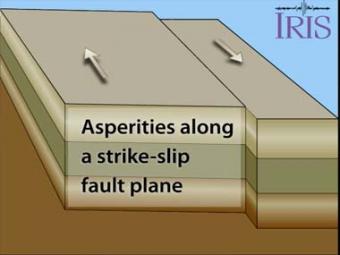
An asperity is an area on a fault that is stuck or locked. Scientists study areas along long fault zones that have not had earthquakes in a long time in order to determine where the next earthquake may occur. As long faults move, all areas of it will, at some point, become "unstuck" causing an earthquake relative to the the size of the asperity that finally breaks.
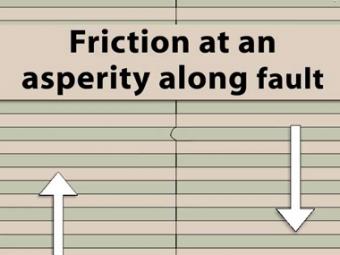
View looking into a fault zone with a single asperity. Regional right lateral strain puts stress on the fault zone. A single asperity resists movement of the green line which deforms before finally rupturing.
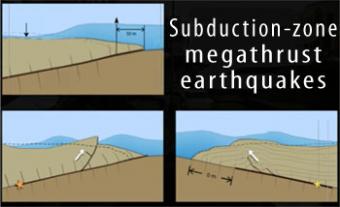
Subduction-zone megathrust earthquakes, the most powerful earthquakes in the world, can produce tsunamis through a variety of structures that are missed by simple models including: fault boundary rupture, deformation of overlying plate, splay faults and landslides. From a hazards viewpoint, it is critical to remember that tsunamis are multiple waves that often arrive on shore for many hours after the initial wave.
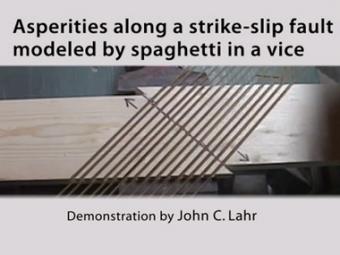
This demonstration, squeezing uncooked spaghetti noodles in a wood template set in a vise, effectively shows how asperities (stuck patches) on a fault rupture at different times.
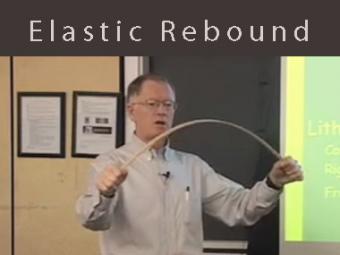
Video lecture about elastic rebound and brittle material in the crust using a yardstick as a mechanical analog. This demonstrates elasticity, brittle fracture, and why it is difficult to predict earthquakes.
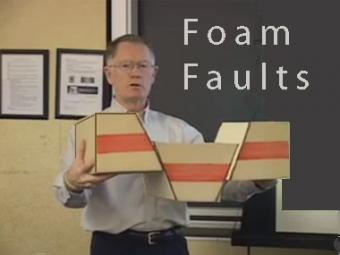
How can I demonstrate plate tectonic principles in the classroom?
Video lecture demonstrates the use of foam faults to demonstrate faults, and a deck of cards to demonstrate folds and fabrics in rock layers. Different types of faults include: normal (extensional) faults; reverse or thrust (compressional) faults; and strike-slip (shearing) faults.
We encourage the reuse and dissemination of the material on this site as long as attribution is retained. To this end the material on this site, unless otherwise noted, is offered under Creative Commons Attribution (CC BY 4.0) license